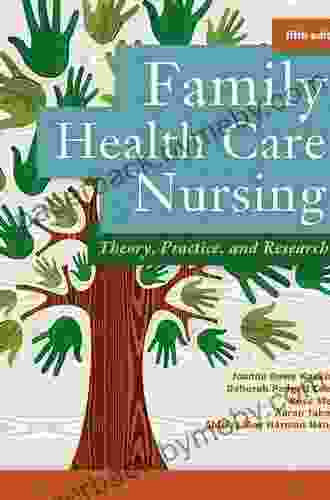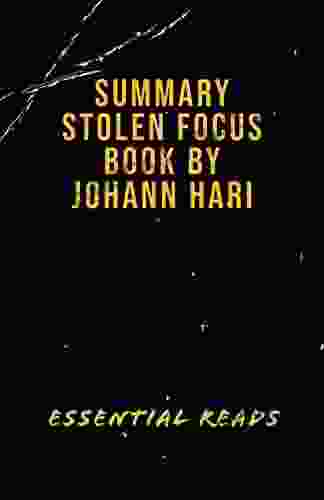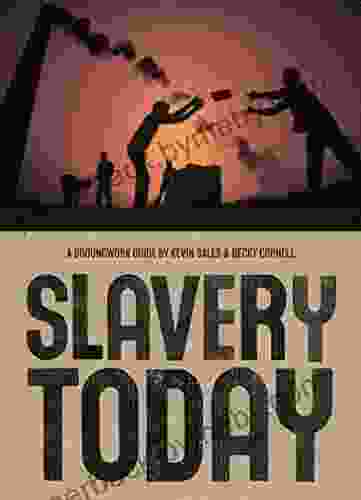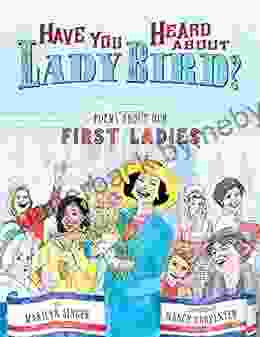Unveiling the Hidden Reality: Slavery Today - A Comprehensive Guide to Global Exploitation

In the 21st century, the scourge of slavery persists as a global pandemic, ensnaring millions of lives. Despite the abolition of slavery in most countries, new forms of exploitation have emerged, adapting to the complexities of our modern world. Modern-day slavery takes on various guises, including forced labor, human trafficking, and child labor, affecting individuals of all ages, genders, and backgrounds. This comprehensive guide aims to shed light on the hidden horrors of contemporary slavery, providing a roadmap for individuals, organizations, and policymakers to combat this insidious practice.
4.3 out of 5
| Language | : | English |
| File size | : | 2266 KB |
| Text-to-Speech | : | Enabled |
| Screen Reader | : | Supported |
| Enhanced typesetting | : | Enabled |
| Word Wise | : | Enabled |
| Print length | : | 137 pages |
The Pervasive Nature of Slavery Today
Contrary to popular belief, slavery is not a relic of the past. It exists in every region of the world, hidden in plain sight. Modern-day slavery is a clandestine industry, operating largely outside the realm of legal and public scrutiny. Victims are often coerced, deceived, or trafficked into situations of exploitation and forced to work under threat of violence, debt bondage, or other forms of coercion.
The scale of modern-day slavery is staggering. The International Labour Organization (ILO) estimates that over 40 million people are trapped in conditions of forced labor, with women and children being disproportionately affected. Additionally, millions are subjected to other forms of exploitation, such as human trafficking, debt bondage, and forced marriage. These victims are not just statistics; they are human beings whose lives have been stolen or severely compromised.
Manifestations of Modern-Day Slavery
Modern-day slavery manifests in diverse forms, adapting to the changing global landscape. Some of the most prevalent types of exploitation include:
1. Forced Labor
Forced labor occurs when individuals are coerced or deceived into working against their will. This can range from manual labor in factories, construction sites, and agricultural fields to more insidious forms of exploitation, such as domestic servitude and forced begging. Victims are often subjected to physical and psychological abuse, threats of violence, and restricted freedom of movement.
2. Human Trafficking
Human trafficking involves the illegal transportation of individuals for the purpose of exploitation. Victims can be sex trafficked, forced into labor, or subjected to organ harvesting. Traffickers often use deception, violence, or economic coercion to lure their victims into these situations. Human trafficking is a major global problem, affecting millions of people, particularly women and children.
3. Child Labor
Child labor refers to the exploitation of children for economic gain. This can include forced labor, hazardous work, and other forms of commercial exploitation. Child labor deprives children of their childhood, education, and often their health and well-being. It is a violation of their fundamental human rights and a barrier to their future development.
The Devastating Impact of Slavery
The consequences of slavery are far-reaching and devastating. For victims, it means a loss of freedom, dignity, and human rights. They endure physical, psychological, and sexual abuse, as well as exploitation and discrimination. The impact of slavery extends beyond the individual to their families and communities. It perpetuates intergenerational poverty, disrupts education, and undermines social cohesion.
Moreover, slavery has a corrosive effect on society as a whole. It undermines the rule of law, promotes inequality, and hinders economic development. By perpetuating exploitation and abuse, slavery violates the fundamental principles of human dignity and justice.
Addressing the Crisis: A Call to Action
Combating slavery requires a concerted and multifaceted approach that involves individuals, governments, businesses, and civil society organizations. It is a complex undertaking that demands collaboration, innovation, and a unwavering commitment to human rights.
1. Raise Awareness and Understanding
The first step towards eradicating slavery is to raise awareness about its prevalence, forms, and impact. Education campaigns, media coverage, and public forums can help dispel myths, challenge misconceptions, and mobilize support for anti-slavery efforts.
2. Strengthen Legislation and Law Enforcement
Governments have a crucial role to play in combating slavery by enacting and enforcing strong laws that criminalize and prosecute the perpetrators of modern-day slavery. Law enforcement agencies must be adequately trained and equipped to identify and investigate cases of exploitation.
3. Protect and Support Victims
Victims of slavery need access to immediate protection, support, and rehabilitation services. This includes safe shelter, medical care, legal assistance, and counseling. Governments and civil society organizations must work together to ensure that victims have access to the resources they need to rebuild their lives.
4. Promote Decent Work and Fair Trade
Addressing the root causes of slavery requires promoting decent work and fair trade practices throughout global supply chains. This means ensuring that workers have safe and fair working conditions, are paid a living wage, and are not subjected to forced labor, child labor, or other forms of exploitation.
5. Empower Communities and Grassroots Organizations
Local communities and grassroots organizations are often at the forefront of the fight against slavery. They have a deep understanding of the local context and are well-positioned to identify and respond to cases of exploitation. Empowering these organizations with resources, training, and support can significantly strengthen anti-slavery efforts.
Slavery is a scourge that continues to blight our world. It is a crime against humanity, robbing individuals of their freedom, dignity, and basic human rights. Addressing this crisis requires a concerted effort from individuals, governments, businesses, and civil society organizations. By raising awareness, strengthening legislation, protecting and supporting victims
4.3 out of 5
| Language | : | English |
| File size | : | 2266 KB |
| Text-to-Speech | : | Enabled |
| Screen Reader | : | Supported |
| Enhanced typesetting | : | Enabled |
| Word Wise | : | Enabled |
| Print length | : | 137 pages |
Do you want to contribute by writing guest posts on this blog?
Please contact us and send us a resume of previous articles that you have written.
 Book
Book Novel
Novel Page
Page Chapter
Chapter Text
Text Story
Story Genre
Genre Reader
Reader Library
Library Paperback
Paperback E-book
E-book Magazine
Magazine Newspaper
Newspaper Paragraph
Paragraph Sentence
Sentence Bookmark
Bookmark Shelf
Shelf Glossary
Glossary Bibliography
Bibliography Foreword
Foreword Preface
Preface Synopsis
Synopsis Annotation
Annotation Footnote
Footnote Manuscript
Manuscript Scroll
Scroll Codex
Codex Tome
Tome Bestseller
Bestseller Classics
Classics Library card
Library card Narrative
Narrative Biography
Biography Autobiography
Autobiography Memoir
Memoir Reference
Reference Encyclopedia
Encyclopedia Reelav Patel
Reelav Patel Kenneth Cloke
Kenneth Cloke Muhammad Zain
Muhammad Zain Kenny Dill
Kenny Dill Peter Hoffman
Peter Hoffman Susan Higginbotham
Susan Higginbotham Maurizio Onnis
Maurizio Onnis Terry C Treadwell
Terry C Treadwell Mary M Lane
Mary M Lane Melissa Daimler
Melissa Daimler Steven Cowie
Steven Cowie Kent Lineback
Kent Lineback Kim Vesey
Kim Vesey Michael Part
Michael Part Omotayo Banjo
Omotayo Banjo Rob Goodman
Rob Goodman Steven Charleston
Steven Charleston Kevin Bupp
Kevin Bupp Kevin A Hassett
Kevin A Hassett Lee Loughridge
Lee Loughridge
Light bulbAdvertise smarter! Our strategic ad space ensures maximum exposure. Reserve your spot today!

 Hudson Hayes100% Guarantee: Ace Your South Carolina CDL Test with Our Comprehensive Guide
Hudson Hayes100% Guarantee: Ace Your South Carolina CDL Test with Our Comprehensive Guide
 Ian McEwanFamily Health Care Nursing: Redefining Healthcare with Theory, Practice, and...
Ian McEwanFamily Health Care Nursing: Redefining Healthcare with Theory, Practice, and... Arthur Conan DoyleFollow ·3k
Arthur Conan DoyleFollow ·3k T.S. EliotFollow ·13.1k
T.S. EliotFollow ·13.1k Garrett PowellFollow ·14.6k
Garrett PowellFollow ·14.6k Devin CoxFollow ·3k
Devin CoxFollow ·3k Isaac MitchellFollow ·5.3k
Isaac MitchellFollow ·5.3k W.B. YeatsFollow ·18.6k
W.B. YeatsFollow ·18.6k August HayesFollow ·15.5k
August HayesFollow ·15.5k Clarence MitchellFollow ·12.6k
Clarence MitchellFollow ·12.6k

 Isaac Asimov
Isaac AsimovEmbark on an Epic Adventure: The Colorado Trail 9th...
Unveiling the Treasures of the Colorado...

 Clinton Reed
Clinton ReedUltimate Football Heroes: Uncover the Gridiron Greatness...
Enter the World...

 Ibrahim Blair
Ibrahim BlairUnveiling the Secrets of Stolen Focus: A Journey to...
In today's relentless digital...

 Colt Simmons
Colt SimmonsRediscover the Founding Father's Vision: Thomas Jefferson...
Immerse Yourself in the Unedited Words of...

 Juan Butler
Juan ButlerExcel in Language Learning: The Ultimate Self-Study...
Unlock Your Language Potential with Our...
4.3 out of 5
| Language | : | English |
| File size | : | 2266 KB |
| Text-to-Speech | : | Enabled |
| Screen Reader | : | Supported |
| Enhanced typesetting | : | Enabled |
| Word Wise | : | Enabled |
| Print length | : | 137 pages |










